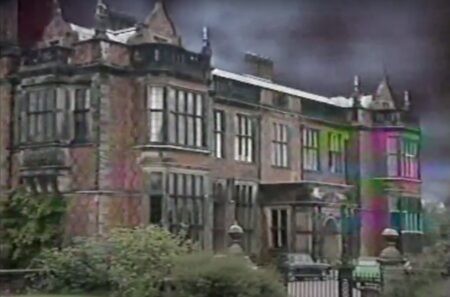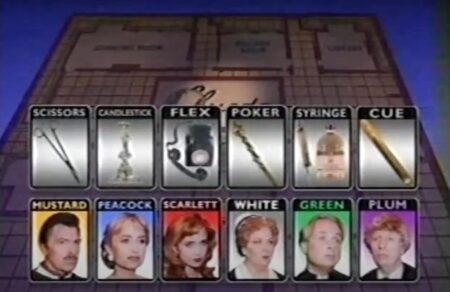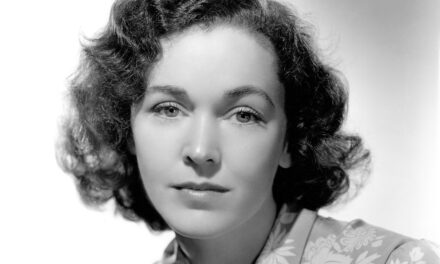In his book Seeing Things (2000), John Ellis hailed the emergent multi-platform environment of the twenty-first century as the ‘era of plenty’. When I ask my students to define what is meant by ‘plenty’, they invariably reply ‘a lot’. Well, yes – but that lacks one vital nuance. Plenty, I explain to them, means more than we need.
Quite possibly, a lot more.
I don’t know if you’ve noticed, but at the moment there are plenty of quiz/game shows on UK television. This is understandable, as the genre is one that is least directly affected by COVID-imposed restrictions such as social distancing. While the aesthetics of Have I Got News for You were initially impacted quite dramatically by the virus last year, with Hislop, Merton and guests relegated to participating from their homes (and thus allowing me to compare my collection of Hitchcock DVDs and BluRays with Mr Merton’s), the most recent series saw them back in the studio, safely (we hope) separated by almost undetectable perspex screens, which is all to the good. I have previously blogged enthusiastically about Pointless, both the regular and Celebrity editions, along with Richard Osman’s House of Games (though I’m beginning to suspect that he isn’t quite as knowledgeable as I’d imagined, unless football is involved). I will happily answer along with Mastermind if it happens to be on, and can endure Victoria Coren-Mitchell’s deathly opening and closing witticisms on Only Connect (I hardly ever get the answers right). I stomach The Hit List when my partner wants to watch, and will even sit through Catchpoint if it is a celeb I don’t like (and there are many) who is literally dropping the ball. However, I draw the line at The Wall, the trailers for Michael McIntyre’s The Wheel put me off even trying to watch, and I am not the least bit curious as to what Gordon Ramsay’s Bank Balance is (but whatever they’re paying him, it’s too much).
Sometimes, plenty can be too much.
A genre that has been more directly affected by COVID, but which is now beginning to re-emerge, relatively unscathed, is crime drama. We usually experience an immediate glut of these in long, dark evenings of the post-Christmas schedule, but this January we heard nary a peep from Silent Witness, while the daytime schedule had to make do with repeats of old episodes of Father Brown. On the plus side, Death in Paradise did well to squeeze out yet another series in the sweltering Guadeloupe sun, and while Bloodlands has not floated my cold case boat I am currently enjoying Unforgotten, as always (though ITV remain Unforgiven for shifting it to Tuesday this week; you can guess why). It was nice to see McDonald and Dodds back, though I gather we were only given two out of the three episodes made, the last of which has been bumped to later in the year – possibly to allow the new John Simm vehicle, Grace, to launch before series six of Line of Duty begins over on BBC One – and that is of course another criminal treat to look forward to. In addition, ITV now has a backlog of Midsomer Murders in the bag, though for some reason they seem keener to premier these abroad than at home, US viewers often getting first dibs on new episodes that only emerge in dribs and drabs back home in Blighty.
On reflection, perhaps we have not been too ill served by our staple genres, given the challenging circumstances under which production teams are currently labouring. However, as I lay in bed last weekend, pondering the current climate, I nevertheless found my mind drifting back to the great game shows and crime dramas of the past. Apropos of nothing, one popped into my mind that I had all but forgotten, to the extent that I half-believed I’d imagined it. I’ll lay odds you don’t remember it either, but a quick search on YouTube proved I wasn’t dreaming. I’ll give you a clue (and that’s a clue in itself): it ran for four series on ITV between 1990 and 1994, its cast both changed and stayed the same for each new series (that’s more of a riddle, really, isn’t it?), it formed the basis of a reasonably successful international format sale, and (this is the big one) it was based on a much-loved board game.
Give up? It was Cluedo (yes, that’s not a typo in the blog title), and I suppose it qualifies as both a game show and a crime drama, since it combined elements of each. Every episode would begin with first an exterior and then interior shots of a traditional country manor house, a voiceover announcing that ‘A stranger lies dead in Arlington Grange. There are six suspects – but which one is the killer?’ Said suspects would then be listed – Mrs Peacock, Colonel Mustard, Reverend Green, Professor Plum, Miss Scarlett and Mrs White, played by a fresh set of actors every series – before, bizarrely, cutting to a wide shot of a generic shiny floor TV studio. To the left were six empty chairs; to the right, two pairs of celebrity contestants. Onto the set would then bound the host (originally James Bellini, then a pre-Millionaire Chris Tarrant, and finally Richard Madeley – sans Judy – for series three and four), to explain the format to viewers and contestants alike. A murder was, apparently, about to be committed, and the objective was (unsurprisingly) to guess the killer’s identity. Contestants were given the chance to watch the proceedings leading up to the murder (a pre-recorded narrative), but without being told in which room or with what weapon (not always the same options as in the board game) it was committed. After this there was a brief opportunity to voice initial suspicions (cueing equally speculative booing and cheering from the studio audience), and to cross-examine a couple of the suspects (the actors, now sitting in the six chairs on the left, were thus required to extemporise furiously, while trying to remain in character throughout). Contestants had the chance to voice their initial suspicions before the ad break, allowing the process of elimination to begin; fortunately, nobody ever guessed the killer, room and murder weapon correctly on the first attempt. Upon their return, further evidence was presented (another pre-filmed segment), and contestants had one last chance to question the suspects before giving their final verdict. The guilty party would then confess all.
It was utterly bonkers, and rather wonderful. Can you imagine Madeley juggling the opinions of Valerie Singleton and Johnny Ball (and it’s difficult to conjure a more wholesome pairing) and Edwina ‘Don’t go to work on an egg’ Currie and Richard O’Brien (looking like an uninterested Martian punk in an oversized black leather jacket) as to whether it was Susan George, Lewis Collins or Christopher Biggins who had brought Neil Morrissey’s existence to an untimely end?
You can’t?
Have a look at this, then. It’s the opening episode of series three, which was my personal favourite because it featured Tom Baker in a typically eye-popping performance as Professor Plum. Baker had been ‘my’ Doctor (and nobody else’s, do you understand?), and I was happy to see that, after cropping his hair horribly a few years earlier, making him unrecognisable (to me) when he narrated The Iron Man on Jackanory in early 1986, he had allowed his natural curls to grow back. Although he was now a little greyer – and perhaps a tad thicker around the waist – he looked almost ready to reprise the role of everyone’s favourite Time Lord for a multi-Doctor anniversary story the following year. Alas, the latter never came to pass (unless you count ‘Dimensions in Time’, which we don’t, and besides he’d cut his hair again by that point), but it was nice to see him looking vaguely Doctorish once more, and clearly in fine fettle. I think it was also this year that he turned up on Pebble Mill at One, wearing a very smart pinstripe suit, and talked about how, when he had been a monk, the sight of bare feet could induce in him a state of ‘priapic euphoria’. Not the show’s usual fare, but what did Tom care? He was, after all, from another planet.
But I digress. Apologies; 1992 was a very special time for me. It was the year I started university as an undergraduate, and certain events have stuck in my mind. I’d honestly forgotten just how mad Cluedo was, though. In this episode, Neil Morrissey (before he was ‘TV’s Neil Morrissey’; he’d done Boon, but not Men Behaving Badly yet) plays a hunt saboteur who has been set about by some of the landed gentry among Mrs Peacock’s group of hooray Henries. Mrs White (Pam Ferris, riding high from The Darling Buds of May) is ministering unto his wounds in the kitchen when the hunt party return. Mrs Peacock (George) is upset because her horse, Phantom, was startled by the saboteurs, galloped into the road and was hit by a car (motive one!). Meanwhile, the Reverend Green (Biggins), who witnessed the assault on Morrissey’s character, is reluctant to give any evidence that might incriminate his friends, Peacock, Mustard and Plum (motive two!). Morrissey then confronts Mustard (Collins), Plum and Miss Scarlett (Lysette Anthony, then best known for sitcom Three Up, Two Down), claiming he has compromising video footage of Plum torturing a fox (motive three!). He also embarrasses Miss Scarlett when he reveals their former relationship (motive four!), so angering the Colonel that the latter threatens violence against him (motive five!). Even Mrs White turns against Morrissey when she hears about poor Phantom (not really a motive for murder – but, you know…).
Once the clip is over, cutting edge technology is used to show the layout of Arlington Grange and the various potential weapons, before the six possible killers are introduced. Valerie and Johnny’s gut reaction is that Mrs Peacock is the killer (‘Nooooooooo’ murmur the studio audience, uncertainly), whereas Edwina and Richard opt for Colonel Mustard, thus earning themselves an approving roar from the audience, who are now baying for blood themselves.
Professional smoothie that he is, Madeley remains non-committal. ‘There’s still a long way to go,’ he says – but actually, the whole thing is done and dusted in less than half an hour. I won’t give away the ending in case I’ve tempted you to watch the whole thing – and if you enjoy it, all the other episodes are available on YouTube.
I don’t think Cluedo was nominated for any BAFTAs, and it wasn’t even particularly original, re-treading ground already covered in the 1970s by Whodunnit?, which was presented by another former Gallifreyan, Jon Pertwee. Cluedo was produced by Granada in association with Waddingtons (no surprises there), and according to the always-reliable Wikipedia there were format sales to Australia, Germany, France, Portugal and Sweden. None of these enjoyed the longevity of the original, and I think the reason for this is that the whole premise and execution are so quintessentially English. Put bluntly, it’s all a bit silly – but fun. And what’s wrong with that? It made me laugh out loud, and we could all do with a laugh right now. Cluedo may be cheap as chips and daft as a brush, but it reminds me of a more light-hearted time. It might even inspire me to dust off my own copy of the board game – when I am once again safely allowed to mingle with others from outside my household, that is.
Keep your peckers up, chaps.
Dr Richard Hewett is a lecturer in media theory. He has contributed articles to The Journal of British Cinema and Television, The Historical Journal of Film, Radio and Television, Critical Studies in Television, Adaptation, SERIES – International Journal of Serial Narratives and Comedy Studies. His 2017 book, The Changing Spaces of Television Acting, was published in slightly more affordable paperback form last year. For more information on academic publications, see here. For non-academic writing, go there.








